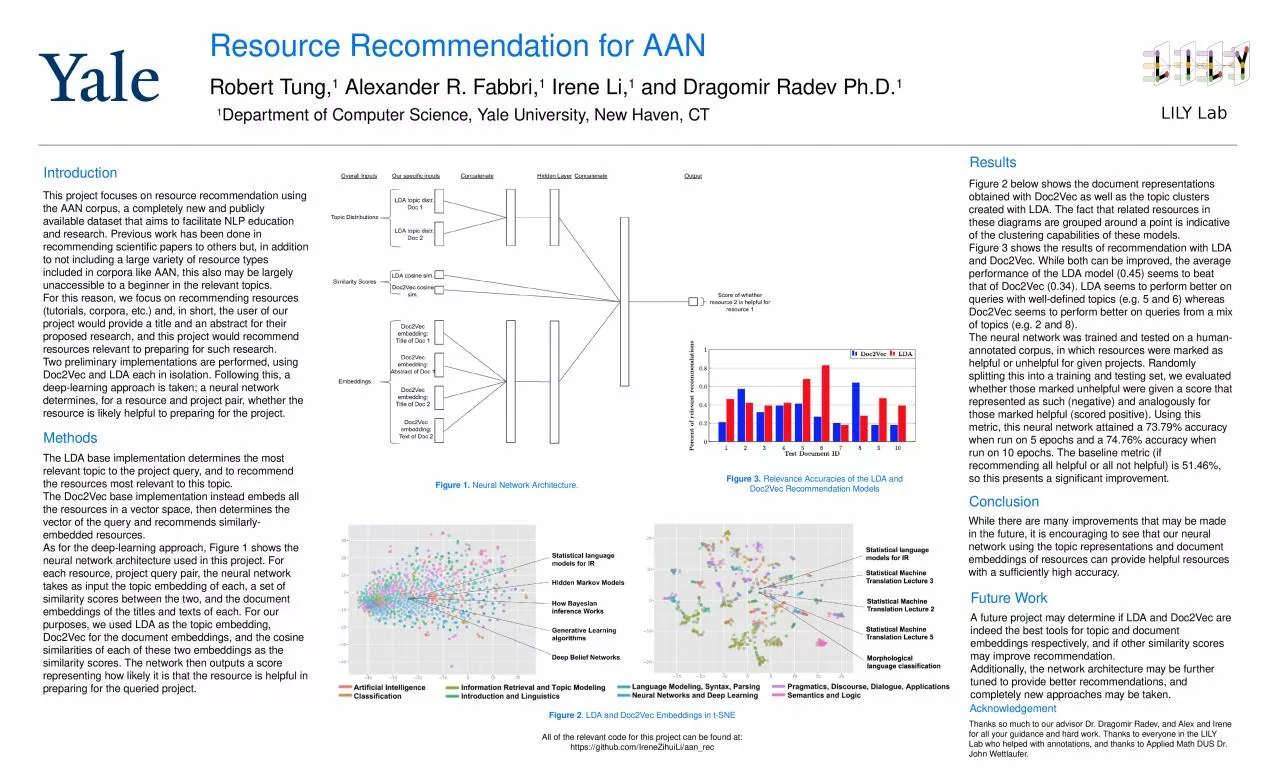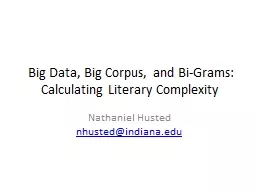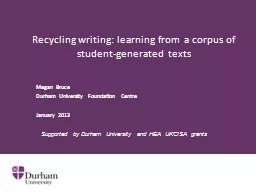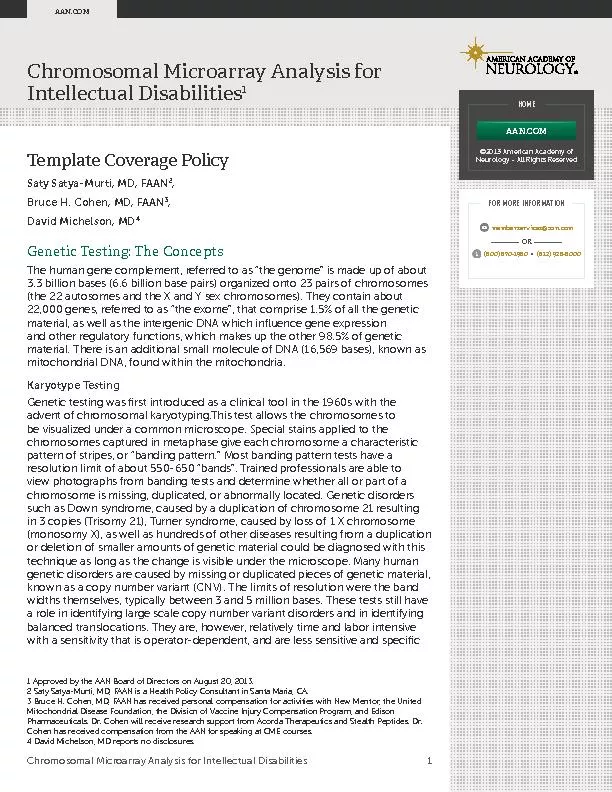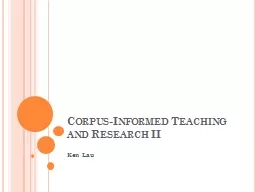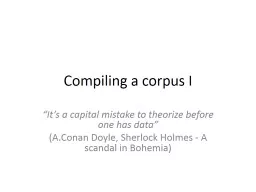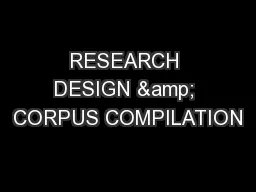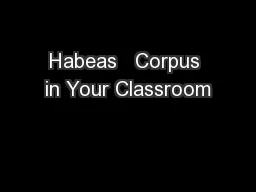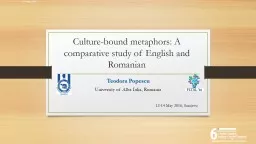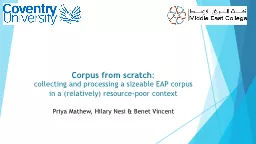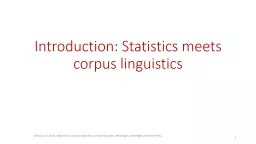PPT-Introduction This project focuses on resource recommendation using the AAN corpus, a
Author : KingOfTheWorld | Published Date : 2022-08-04
unaccessible to a beginner in the relevant topics For this reason we focus on recommending resources tutorials corpora etc and in short the user of our project
Presentation Embed Code
Download Presentation
Download Presentation The PPT/PDF document "Introduction This project focuses on re..." is the property of its rightful owner. Permission is granted to download and print the materials on this website for personal, non-commercial use only, and to display it on your personal computer provided you do not modify the materials and that you retain all copyright notices contained in the materials. By downloading content from our website, you accept the terms of this agreement.
Introduction This project focuses on resource recommendation using the AAN corpus, a: Transcript
Download Rules Of Document
"Introduction This project focuses on resource recommendation using the AAN corpus, a"The content belongs to its owner. You may download and print it for personal use, without modification, and keep all copyright notices. By downloading, you agree to these terms.
Related Documents

